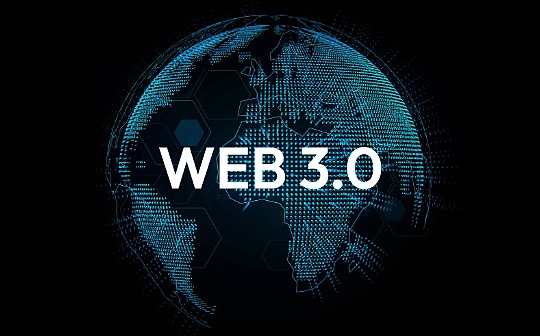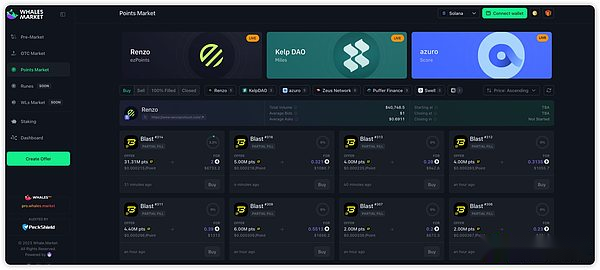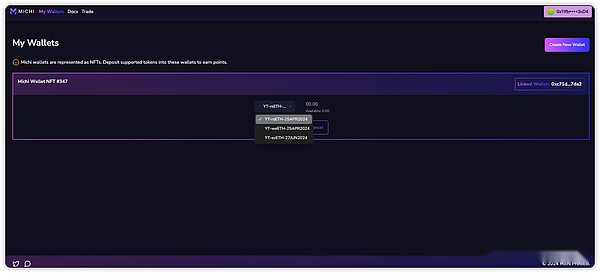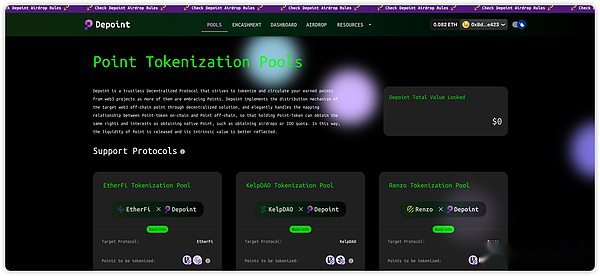
Author: Mario Watch Web3
Preface
We have just experienced the fastest crypto cycle in history. It took less than two quarters to go from a bear market to an extreme bull market. The price of BTC has quickly risen from less than US$30,000 to a historical high. The core driving force of this process is naturallyThe emergence of a large number of BTC ETFs in the context of the macroeconomic context where the Fed tightening cycle is about to end, has injected new large amounts of funds into the market.In this big speculation process, the Web3 world has also quietly changed. On the one hand, new narratives emerge one after another, from Ordinal to BTC Layer2 to Restaking, all of which have created one wealth myth after another. On the other hand, the Web3 project is the most typicalThe genes of the web3 project are also quietly changing, which is also the topic we hope to discuss in depth today, that is, the mysterious flywheel that the Web3 project is proud of, it seems to be undergoing a transformation from Tokenomics to Pointomics.And from my perspective, this doesn’t seem that wonderful!
First, let’s explain this topic. The so-called Tokenomics refers to the combination of “Token” and “Economics”, that is, an economic model built around the issue of a token on the chain as the core subject matter and is constructed around this subject matter. Usually this economyThe core purpose of model establishment includes the following three:
1. Promote project growth by providing certain token incentives to user behaviors that are conducive to project development;
2. Through the design of the token issuance ratio, solve the financing needs of the project party;
3. Grant certain governance rights to the token to realize a relatively decentralized co-governance management mechanism for users and projects
The success or failure of most Web3 projects usually depends on whether the first core purpose can be achieved. A good Tokenomics design can usually achieve a relatively stable effect on the core behavior of the project, and for the project partyMaintaining this effect is less expensive.For the best of these, we usually think that it has a flywheel with positive feedback capabilities, absorbs development energy through continuous operation and achieves cold start of the project.
Pointomics is a word named by the author himself. Its definition is an economic model with Loyalty Point as the core incentive target. It emphasizes incentives for users to promote protocol growth. Its design paradigm is usually related to the user incentive part in Tokenomics.The design is similar, but the subject matter surrounding the incentive mechanism is changed from a token on a chain to a Point number (usually known as Loyalty Point) that exists in the project party’s centralized server.
In recent times, it is not difficult to find that most recent celebrity Web3 projects have chosen to replace Tokenomics with Pointomics during project launch, and these projects usually perform well in data.We can easily select some representative project data to illustrate this trend, with our hottest Ethereum Layer2 projects, Blast and EgenLayer and EtherFi on the Restaking track as examples.They all chose Loyalty Point as their core flywheel, and the total number and growth rate of TVL of these projects far exceeded other projects launched by Tokenomics.



So can we say that Web3’s new flywheel has changed from Tokenomics to Pointomics?I think it’s too early to make this conclusion now.
Pointomics originated from the project party’s unavoidable choice in the bear market
First of all, I think that using centralized Loyalty Point to replace Tokens as the core incentive system, the so-called Pointomics is not a sufficient and sufficient condition for the success of Web3 projects. It originates from the unsuccessful choices of the project party in the bear market.
Let’s take a closer look at the differences between Pointomics and Tokenomics. Although the two want to achieve the same goal, there are actually big differences. The difference is:
1. Fuzzy rights: Unlike Tokenomics, project parties with Loyalty Point as the core flywheel usually do not give accurate value commitments, but only choose some vague soft commitments, such as the possible expected airdrop, which may correspond toCertain boosting effects, etc., which are not common in projects that choose Tokenomics as the core flywheel, because the subject matter of the reward has been publicly circulated at the beginning, and when the value is priced through transactions by the market, its speculative returns have been quantified., this is of reference value for users’ participation.
2. Opacity incentive mechanism: A considerable number of project parties even do not explain the incentive mechanism of Loyalty Point. Since Loyalty Point exists in a centralized server, its incentive mechanism is a black box for users, and users can only watch it.When you get to a number, you cannot know the reason and calculation process for obtaining the number, so it is difficult to explore whether it is fair and accurate.In Tokenomics, the incentive mechanism is implemented through smart contracts, which ensures that users have self-test capabilities in any situation and ensures that the entire reward process is open and transparent.
3. The profit is not circulated: When a user obtains Loyalty Point, it is usually not allowed to trade. In order to fulfill the profit, you can only wait until the project party actively fulfills its soft promise. However, this process is usually long and full of variables.In Tokenomics, users’ rewards are distributed in the form of tokens, which gives users the ability to vote with their feet and allows users to directly realize their own profits through transactions.This in turn also creates certain requirements for project parties to work hard to optimize the project to retain users.
This doesn’t look beautiful, so why does it still develop like this?I think it originated from the project party’s unsuccessful choice in order to reduce project operation costs in the bear market, going back a year ago.BlurandFriend.techIt was a phenomenal project at that time, where Blur was an NFT exchange, and Frien.tech was a decentralized social media platform. Unlike most projects at that time, both chose to use centralized points as the subject matter.Inspire users to use their products, and achieved good results at the time.I think they basically shape the basic paradigm of current Pointomics.
The reason for its success is on the one hand due to the success of project operation and design. On the other hand, I think it is mainly because the crypto market was still in the late stage of a bear market at that time, and the market liquidity and user’s purchasing intentions were relatively low.In the stage, choosing to distribute the token as an incentive will face greater market pressure, and the cost of maintaining the rate of return of project incentives is relatively large. Choosing Pointomics effectively reduces this cost because it is cold-started.In the stage, the project party does not have the pressure to manage the market value, and the profits need to be cashed out after the startup is successful, which reduces the operating costs of the project party in the early stage of the project to a certain extent. However, this is to damage user benefits and to a certain extent the user’s willingness to participate.at the cost of degree.When the market quickly entered a new bull market cycle, users’ willingness to participate in projects and purchase tokens was restored. At this time, due to the existence of market inertia, users have a certain tolerance for Pointomics, which has also made it more recentThe performance is still good on the surface, but it seems a bit rough to adopt Pointomics as a sufficient condition for the success of Web3 projects. When the market is filled with a large number of hidden centralized Points that have not been fulfilled, tired users will backfire on the encryption world.
The connotation value of Loyalty Point is the credit of the project party
Next we need to discuss what is the key to a successful Pointomics design, or what is the connotation and value of Loyalty Point. I think the answer is the credit of the project party.Based on the above sharing, we know that projects that choose Pointomics do not usually give a clear interest in their Loyalty Point, but just perfunctorily with some vague descriptions.This can certainly bring more initiative to the project party. The final equity exchange method can be dynamically adjusted according to the operation status of the project, so as to maintain a more appropriate relationship between cost and effect.
In this case, the motivation for users to remain enthusiastic about the illusory Loyalty Point is to trust that the project party will assign appropriate rewards to Point in the future, and the strength of trust determines whether the project’s Pointomics will be successfully inspired.The enthusiasm of users to participate.However, this is usually strongly related to the background of the project. A team with a luxury VC investment, strong support from a certain ecosystem or a strong background will have a stronger sense of trust, while for those degener, community-driven projectsThis is usually difficult to have at the beginning of the project, which explains that the projects that choose Pointomics and succeed are usually large Web3 oligarchs. You can easily find such examples, especially in the Restaking track.in this way.
Therefore, I think that compared to using Token as the incentive target, the trust cost of choosing Pointomics is higher and more suitable for monopoly projects. However, this also provides more convenient tools and conditions for these oligopolies to exploit users by using their scale advantages;
Web3 oligarchs exploit users through Loyalty Point for initiative, but abandon network effects
So what are the specific aspects of this exploitation of Web3 users? There are three main points:
1. Time cost: Since Web3 oligarchs will actually reward cunningly delayed uncharacteristic futures, and TVL is an important indicator for most Web3 projects, incentives for funding participation are a common means.For users, it is necessary to participate in the project in some way to earn potential benefits, which also raises the time cost of users, because you will not be allowed to do so until the oligopolis truly publicly promised benefits are fulfilled.He did not continue to expect it, and the increasing time cost made it more difficult for users to make sure of exit.
2. Opportunity Cost: We know the importance of liquidity in the stage of the bull market, because the market has never lacked hot spots, and it is relatively easy to capture Alpha returns.However, the funds locked in order to obtain potential benefits will cause users to face a large opportunity cost. Just imagine, you could have participated in Project A with your 10 ETH and obtained 15% APY in real time, but you chose to participate in Project BEarn Points and hope for potential returns, however when the returns are announced in the future, you find that the returns are only 1%.This kind of tragedy was staged in another star project, EtherFi community, not long ago.
3. High risk and low potential returns: It is often fragile at the beginning of the project, especially in the Web3 field. We have seen too many celebrity projects that have achieved high TVL in the short term, but because of some smart contract vulnerabilitiesOr operational errors will eventually lead to the loss of funds, and these errors will eventually be paid by early participating users.Therefore, these users are generally at higher risk than participating in a mature project.However, due to the initiative brought by Pointomics to the project party, it can easily abandon its early participating users after the project is started successfully and runs smoothly, because they have lost value and become a burden, assuming that the project has not started successfully,In order to save costs, the project will also choose to reduce the actual benefits as much as possible.Therefore, this process is a dangerous game with high risk and low potential returns for users.
But is this exploitation perfect for the project?The answer is no.Because in this process the project ignores the network effect.We know that the core values of the Web3 world are decentralized, co-governant and open.Switching the originally closed database into an open and transparent open platform through blockchain, and giving full play to the power of the community to build together through fair incentive mechanisms (usually tokens). This has created many miracles, and the key to these lies in the Internet.effect.However, choosing a centralized Loyalty Point will close the entire incentive system, which has to be said to be a regression and an ignorance of network effects. I can assert that if a project using Pointomics cannot successfully complete the switching of Tokenomics,Or in other words, this process cannot satisfy users, and will not be able to have a vibrant community, nor can it have a hopeful ecosystem. This has to be said to be a greater loss.
Give liquidity to Loyalty Point for Web3 projects is crucial and unstoppable
So has things changed?I think the crypto community has paid attention to this phenomenon and has taken action. The reason is that the centralized nature of Loyalty Point has made it lose its liquidity and transparency, thus causing the user to passively. So in some ways, Loyalty PointGiving liquidity is very interesting.And unlike most Web2 projects Loyalty Point Plan, since most of the key user behaviors of Web3 projects are on-chain behaviors, these data are open and transparent, so they are also used to transfer off-chain Points through some on-chain proxy.On-chaining brings possibilities, which is difficult to achieve in the Web2 world.
We’ve seen some interesting projects trying to solve this problem, e.g.WhaleMarkets,Michi ProtocolandDepoint SubDAO, among which we have seen a lot of transactions around Point income accounts in WhaleMarkets’ Point Market, and Michi Protocol even received the reward from ETH Denver Hackathon, which shows that the pain points are indeed established and have relatively large market potential.To sum up, these projects are generally divided into two core ideas:
 1. By creating an on-chain proxy or on-chain wallet and NFTing the on-chain proxy, the on-chain encapsulation of all the income rights of this account can be achieved. By purchasing the ownership of a on-chain proxy, users can obtain it.All future interests in this account, and the seller can also discount their future income in advance and lock in profits, thereby reducing their time and opportunity costs.Such as WhaleMarkets and Michi Protocol.However, this method has certain limitations. Since the liquidity of NFT carriers is poor, it is impossible to form an effective secondary market, and there are no successful cases of financial innovation around NFT, the relative network effect potential is alsoRelatively low.
1. By creating an on-chain proxy or on-chain wallet and NFTing the on-chain proxy, the on-chain encapsulation of all the income rights of this account can be achieved. By purchasing the ownership of a on-chain proxy, users can obtain it.All future interests in this account, and the seller can also discount their future income in advance and lock in profits, thereby reducing their time and opportunity costs.Such as WhaleMarkets and Michi Protocol.However, this method has certain limitations. Since the liquidity of NFT carriers is poor, it is impossible to form an effective secondary market, and there are no successful cases of financial innovation around NFT, the relative network effect potential is alsoRelatively low.

2. The same as the first idea, but by directly tokenizing the Loyalty Point off-chain, issuing the corresponding on-chain ERC-20 Token directly maps the Loyalty Point, and through some mechanism design, the value of the token and LoyaltyPoint’s value binding makes users obtaining a token equivalent to obtaining the corresponding Point’s ability to cash out the future profits.For example, Depoint SubDAO, compared with the first idea, this method gives the secondary market better liquidity and has stronger potential for financial innovation, but it is even more likely to solve the value mapping relationship between Loyalty Point in Token.As the key, although the key user behaviors that most Web3 projects inspire Pointomics are usually on-chain behavior, many off-chain operations are not ruled out, such as focusing on X and entering the community, which brings a certain coverage of value mapping.challenge.

To sum up, I think it’s time for Web3 Degens to pay attention to this kind of exploitation. Through unremitting efforts, we have regained ownership of the network and avoided the ruthless monitoring and exploitation of Web2 oligarchs. Don’t throw away Web3The foundation for being proud of.








